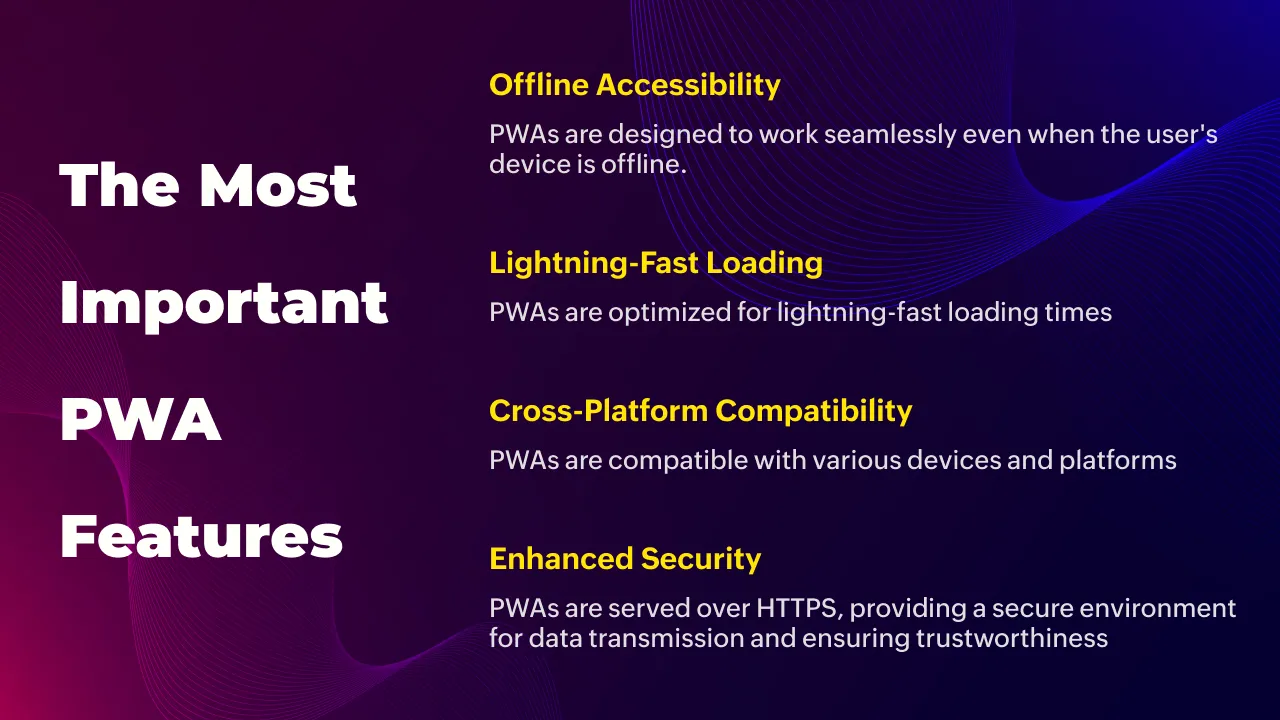

Progressive Web Apps (PWAs), is a game-changer in the world of web development. Businesses are constantly searching for innovative ways to engage their audience and provide seamless user experiences.
In this article, we'll delve into the world of PWAs and explore their potential to transform your online presence.
Progressive Web Apps (PWAs), represent a fusion of web and mobile applications. They offer users the best of both worlds by combining the accessibility of a website with the functionality of a native mobile app.
PWAs can be accessed through web browsers and installed on users' devices, allowing for an app-like experience without the need for a traditional app store download.

Why They're Changing the Game
PWAs are designed to work seamlessly even when the user's device is offline. This is achieved through advanced caching techniques, ensuring that your content remains accessible, regardless of the user's connectivity.
Speed is of the essence in the digital realm. PWAs are optimized for lightning-fast loading times, reducing bounce rates and keeping users engaged.
Say goodbye to the fragmentation of different operating systems. PWAs are compatible with various devices and platforms, streamlining your development efforts and expanding your reach.
Security is a top priority for both businesses and users. PWAs are served over HTTPS, providing a secure environment for data transmission and ensuring trustworthiness.

Driving Results for Your Business
PWAs offer a smooth and immersive user experience, leading to increased user engagement and longer session durations. This can translate into higher conversion rates and improved brand loyalty.
Developing separate native apps for different platforms can be costly and time-consuming. PWAs simplify the process, as they are built using web technologies and can be easily maintained across platforms.
Search engine optimization (SEO) is essential for online visibility. PWAs are inherently SEO-friendly, with responsive design and fast loading times, contributing to higher search rankings.
The combination of fast loading times and an app-like experience results in improved conversion rates. Users are more likely to complete actions such as making a purchase or signing up for a newsletter.
Your Roadmap to Success
Implementing PWAs for your business begins with a strategic approach:
Assess Your Goals: Determine your objectives for implementing a PWA, whether it's improving user engagement, increasing conversions, or enhancing mobile accessibility.
Choose the Right Tools: Select the development tools and frameworks that align with your project requirements. Popular choices include React, Angular, and Vue.js.
Design with the User in Mind: Prioritize user experience and ensure that your PWA offers a seamless, intuitive interface.
Optimize for Performance: Pay special attention to loading times and overall performance. Compress images, minimize code, and implement efficient caching strategies.
Test Rigorously: Thoroughly test your PWA across different devices and browsers to ensure compatibility and functionality.
Promote Your PWA: Once your PWA is live, actively promote it to your audience through various marketing channels.
Embrace the Future with PWAs
Progressive Web Apps are revolutionizing the way businesses engage with their audience and deliver digital experiences. With their offline accessibility, lightning-fast loading times, and cross-platform compatibility, PWAs are a strategic choice for companies looking to stay ahead in the digital race. By implementing PWAs, you can enhance user engagement, reduce development costs, boost SEO performance, and ultimately drive better results for your business. So, why wait? It's time to unlock the power of PWAs and take your online presence to new heights.
A Progressive Web App, or PWA, is a web application that combines the best features of both web and mobile apps. It offers a seamless user experience, including offline functionality and push notifications.
PWAs enhance user engagement, reduce bounce rates, and improve SEO rankings. They also eliminate the need for users to download and install apps from app stores.
PWAs are not necessarily replacing native apps but are offering an alternative approach. Whether to choose a PWA or a native app depends on the specific requirements of a project.
Developing a PWA can be complex, but following best practices and understanding the process can make it more manageable.
Key security considerations for PWAs include implementing HTTPS, content security policies (CSP), and respecting user data privacy to ensure a safe browsing experience.
